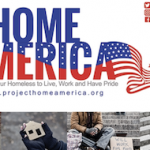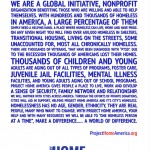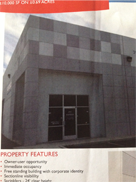Several homeless men sit in Central Park in downtown Turlock. At the end of this month Turlock area cold-weather homeless shelters will close but homeless have options for possible housing through the Stanislaus County Homeless Prevention and Rapid Rehousing Program. – photo by JONATHAN MCCORKELL / The Journal
By DAN WEBER
Association Of Mature American Citizens
It’s been widely reported that 10,000 American seniors turn 65 each and every day and that this rapid pace of aging will continue until 2029. And now, Harvard University tells us that more than half of U.S. households are headed by individuals who are over 50 and that a growing number of them have difficulty meeting their housing costs, according to the Association of Mature American Citizens (AMAC).
A report recently released by Harvard’s Joint Center For Housing Studies (Housing America’s Older Adults – 2018) concludes that “whether they own or rent, millions of older households struggle to pay for their housing and other basic necessities, and their numbers are rising. Householders in their 50s to mid-60s are especially at risk of having insufficient resources to manage rising healthcare and housing costs in their later years.”
There is indeed a serious shortage of low income housing in the U.S. The National Low Income Housing Coalition estimates that currently there is a nationwide shortage of 7.2 million low income rental homes.
The lack of affordable housing is a principal cause of homelessness, which is on the rise among the elderly. The statistics show that individuals age 62 and older experiencing so-called sheltered homelessness soared by more than 48 percent between 2007 and 2016.
Aging on the streets, if left unchecked, may reach epidemic proportions in the coming decades. The Homeless Research Institute has projected that the population of seniors who are homeless could increase from 44,000 in 2010 to 95,000 by the year 2050. But, despite the “gloomy outlook” the issue is being addressed.
Nan Roman, President and CEO of the National Alliance to End Homelessness, recently put it this way in a report issued just last month: “Those working on the front lines of the homelessness system are actually getting more people back into housing every year. The increases of the past two years aren’t because the homelessness system isn’t effective; they are because more people are coming into the system than ever, and there are fewer homes to put them into.
“Nonetheless, the fact that so many communities continue to reduce the number of homeless people is proof that with greater federal and local investments and a bigger commitment to affordable housing, the rest of the nation can do the same.”
Roman also pointed out that there was a decline in the numbers of homeless individuals and families in 31 states and the District of Columbia.
Dan Weber is President of The Association of Mature American Citizens (https://www.amac.us), a senior advocacy organization that takes its marching orders from its members. They act and speak on members’ behalf, protecting their interests and offering a practical insight on how to best solve the problems they face today.







